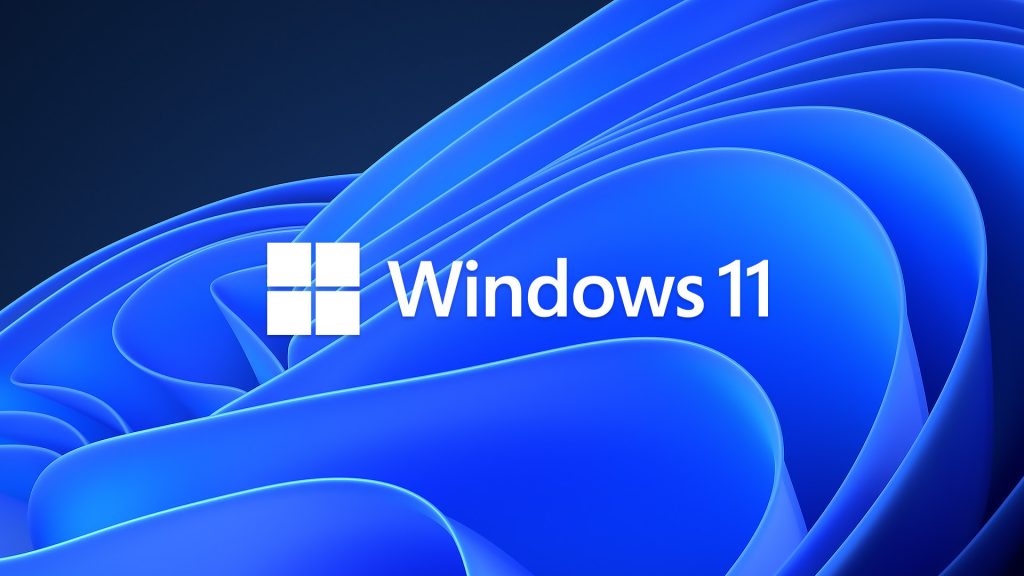
Microsoft unveiled Windows 11 on June 24, 2021 at its virtual launch event. Though Windows 11 will be officially available on October 5, 2021, Microsoft has shared the initial beta version with members of its Windows Insider Program. Starting October 5th, Microsoft will roll out the Windows 11 upgrade to eligible Windows 10 PCs, and pre-loaded Windows 11 will be available for sale.
The latest OS offers significant improvements to security and management features. Let’s take a detailed look at what’s new, what these changes mean for your organization, and how to make sure your organization is ready to switch to Windows 11.
What’s new in Windows 11?
Microsoft has simplified the design of Windows and enhanced the user experience. New built-in security features have been introduced in Windows 11. Microsoft has got it right in this update by infusing security features that are much needed by enterprises. Some of the primary security features include TPM 2.0, hardware-based integrity protection, passwordless authentication using Windows Hello, and secured-core PCs.
Let’s look at a few highlights of Windows 11.
1. Android apps are coming to the Microsoft Store
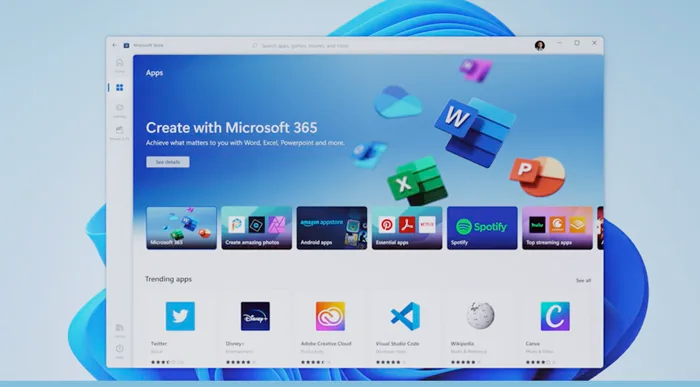
Microsoft Store
In the new Microsoft Store, users will be able to download Android apps on their Windows computers. Microsoft has partnered with Amazon to bring its catalog of Android apps and games to Windows, thanks to the integration with the Amazon Appstore. Microsoft has also teamed up with other vendors to bring on board several third-party apps like Disney+, Visual Studio, Adobe Creative Cloud, Zoom, and Canva.
2. Faster connectivity with Microsoft Teams
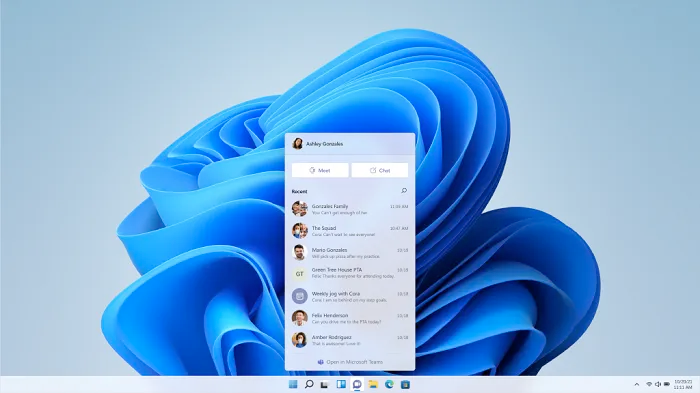
Microsoft Teams
Microsoft has replaced Skype and Outlook with Microsoft Teams. In Windows 11, Teams comes bundled with chat features that include audio and video calling, meetings (you can share your whole screen or any window on your screen with others in a meeting), and presence and status settings. You can connect with your contacts via text or call, irrespective of their device or OS. Native Teams clients are available for Android, iOS, Windows 10, macOS, and Linux, and you can also use Microsoft Teams in a web browser.
3. A sleeker design that’ll make you more productive
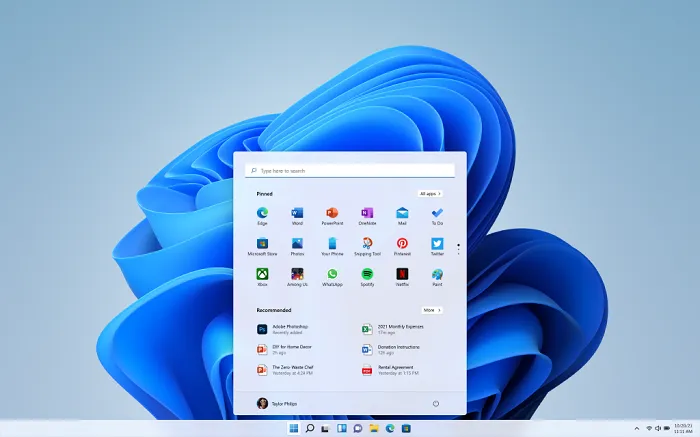
A sleeker design
Microsoft says that Windows 11 is going to offer a simpler and more productive user experience. There is going to be a new Start menu, UI, and Taskbar, along with refreshed fonts and icons. The Start menu is going to be placed in the center to make it easier to locate.
4. Snap Layouts and Snap Groups deliver next-level task switching
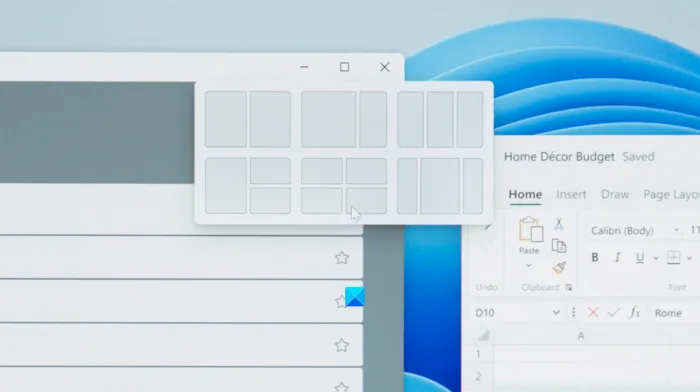
Improved multitasking
Users will now be able to access multiple windows more flexibly by snapping apps next to one another. Windows 11 is introducing Snap Layouts and Snap Groups to help users enhance their multitasking abilities.
5. Faster, personalized widgets for all
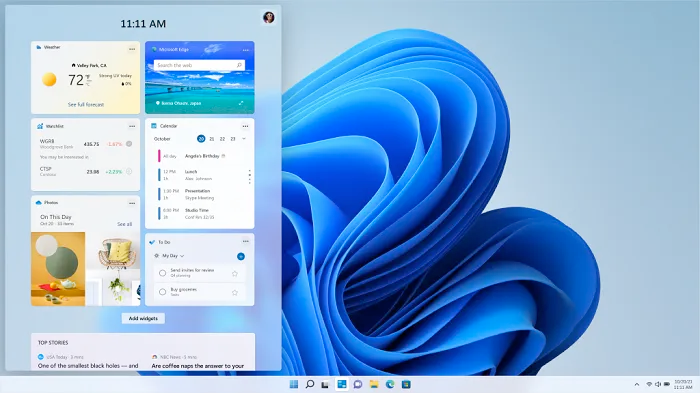
Widgets in Windows
The new OS will serve users news and information related to their interests via Widgets, a personalized news feed. You can use personalized widgets to customize at-a-glance info like calendars, tasks, weather, and news.
6. Trusted Platform Module (TPM)
Windows 11’s main focus is the secure-by-design concept. TPM is a chip used to secure confidential and sensitive data, like encryption keys and user credentials, behind a hardware barrier. It will help protect PCs against malware, such as ransomware, and other cyberattacks. The TPM chip is either added to the CPU individually or integrated into the computer’s motherboard.
7. Going passwordless
For consumers, new Windows 11 devices will be passwordless by default from day one. For enterprises, Windows Hello for Business supports simplified passwordless deployment models for achieving a deploy-to-run state within a few minutes. This includes granular control of authentication methods for IT admins while securing communication between cloud tools to protect corporate data and identity. With Windows Hello, Windows 11 is moving on to stronger authentication methods, including facial recognition, fingerprint verification, and other biometrics.
How to prepare your IT ecosystem for a mass update
While it is important to keep your network updated, it is recommended to proceed with caution since app or network compatibility may take a hit with any update. Please ensure that you follow these steps for a smooth upgrade:
1. Test deployment and functionality on all hardware: It is always recommended to try upgrading at least one device of each type to check for deployment errors. If the deployment works fine, the next step would be to check if the devices are functioning as intended.
2. Test compatibility: Since Windows 11 requires some minimum hardware requirements, please ensure the devices meet the below requirements in your network.
|
Requirement |
Description |
|
Processor |
1GHz or faster, with two or more cores on a compatible 64-bit processor |
|
Memory |
4GB RAM |
|
Storage |
64GB or larger storage device |
|
System firmware |
UEFI, secure boot capable |
|
TPM |
TPM version 2.0 |
|
Graphics card |
DirectX 12 compatible graphics / WDDM 2.x |
|
Display resolution |
Over 9”, with HD resolution (720p) and 8-bit color channel |
3. Plan deployment: Create a plan to upgrade devices in stages, and ensure that IT admins are available during the time of deployment for each stage.
You can find the detailed steps to deploy Windows 11 using Desktop Central here.
Does Desktop Central support these updates?
We’re providing day-zero support for Windows 11. This means that devices updated to Windows 11 can be managed hassle-free and new features can be leveraged instantly. Support for these features is available in the on-premise and MSP version of Desktop Central.
If you’re an existing user of Desktop Central, you can update to the latest build. If you’re new to Desktop Central, you can explore all its features including support for Windows 11 with a free 30-day trial.
Moving forward, Desktop Central will be able to analyze the compatibility of your managed windows devices and give you a detailed report listing the hardware that needs to be upgraded to deploy the Windows 11 update. Support for Windows 11 will be extended to Desktop Central Cloud as well.

